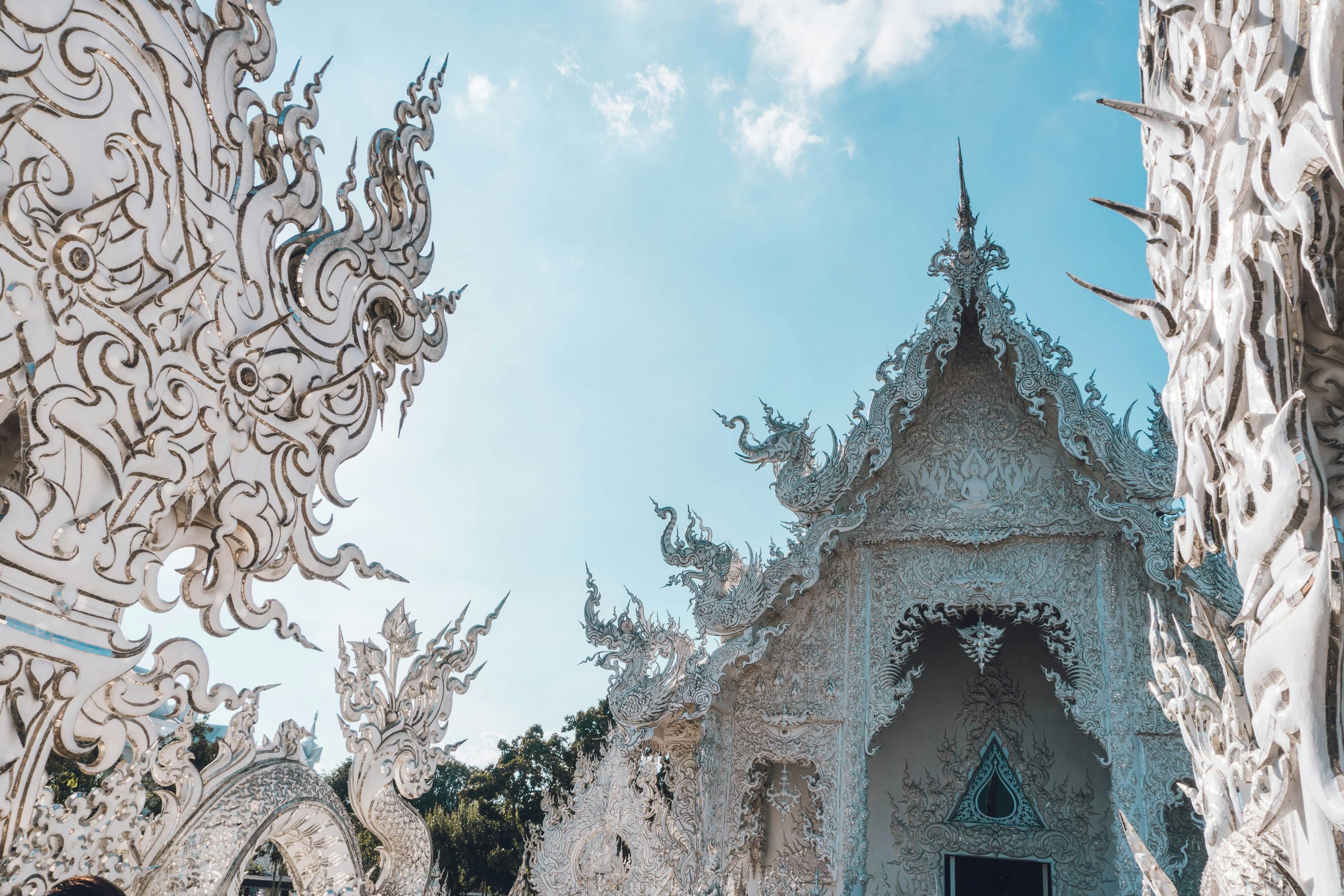Spanish Glossary
The post Spanish Glossary appeared first on Lions Roar.

3 jewels
Buddhists take refuge in three different expressions of awakened mind: buddha, dharma, and sangha. Each of these is a precious and necessary element of the Buddhist path, and so they are called the three jewels.
Overview What Are the Three Jewels? More 3 jewels archive3 poisons
The three poisons — greed, anger, and ignorance — are the energy of ego’s three basic attitudes — for me, against me, and don’t care. All unwholesome states of mind (kleshas) are variations on these three themes.
Overview What Are the Three Poisons? More 3 poisons archive4 divine abodes
The divine abodes (Pali: brahmaviharas) are four prized emotions or mindstates that give us a framework to cultivate positive behaviors and minimize harmful ones. They are called the “divine abodes” because they are the mindstates in which all the enlightened ones reside. They are also known as the “four immeasurables” or “four limitless ones” because they represent love and goodwill toward all sentient beings, without limit. The four are: loving-kindness (Pali: metta), compassion (karuna), sympathetic joy (mudita), equanimity (upekkha).
Overview What Are the Four Brahmaviharas? Deep Read The Four Highest Emotions More 4 divine abodes archive4 Noble Truths
The Four Noble Truths are the Buddha’s basic teaching, encapsulating the entire Buddhist path. The first truth explains that life involves suffering, distress, and dissatisfaction. The second truth says the cause of this discontent is self-centered craving and ignorance. The third truth says that we can realize the end of suffering. The fourth truth tells us that freedom comes through practicing the Buddha’s Eightfold Path.
Overview What Are the Four Noble Truths? More 4 Noble Truths archive5 precepts
The five precepts are the five rules that form the foundation of Buddhist morality. The precepts are: not killing, not stealing, not misusing sex, not engaging in false speech, and not indulging in intoxicants. Many new Buddhists take on the five precepts with their refuge vow. Interpretation of the precepts varies widely from person to person and school to school, with some Buddhists adhering literally and others taking the precepts as suggestions.
Overview What Are the Five Precepts? Deep Read The Buddha’s Training Wheels More precepts archive5 skandhas
Sanskrit — The five skandhas are the constituent parts that make up living beings. Skandha means “heap.” They are referred to as heaps because they are collections of parts without any central core. The five skandhas are: form, feeling, perception, formation, mental formation, and consciousness.
Overview What Are the Five Skandhas? Deep Read How Your Mind Works More 5 skandhas archive6 transcendent perfections
In Mahayana Buddhism, the bodhisattva practices the six paramitas, or transcendent perfections. These are a path to enlightenment, the fruition of the bodhisattva way, and a means to benefit sentient beings. They are generosity, discipline, patience, exertion, meditation, and wisdom.
Overview What Are the Six Transcendent Perfections? Deep Read The Practice of a Bodhisattva More 6 transcendent perfections archive12 nidanas
Sanskrit — The 12 nidanas, which are pictured as the outer circle in the Wheel of Life, describe the chain of causation by which the cycle of death and rebirth known as samsara is created. They are also known as the 12 links of dependent origination. With basic ignorance as the first cause, each link in the chain is both the result of the previous nidana and the cause of the next.
Overview What Are the Twelve Nidanas? More 12 nidanas archiveAbhidharma
Sanskrit — The early Buddhist teachings on psychology.
Deep Read The Four Layers of Consciousness More Abhidharma archiveahimsa
Sanskrit — The principle of non-violence towards all sentient beings (including oneself!). The practice of making conscious where we harm and trying to avoid or at least reduce it.
(a-)kusala
Pali; Sanskrit: (a-)kuśala — Kusala means “wholesome” or “skill-ful.” What action or in-action brings more happiness and peace into the world? Akusala is the opposite of that.
ānāpānasati
Pali; Sanskrit: ānāpānasmṛti — Mindfulness of breathing; also rendered as mindfulness with breathing.
anatta
Pali — Not-self. Non-identification with a permanent self. We can get all philosophical about the question whether there is a self or not but at the core of this concept lies the question: Does making this (thought, emotion, experience etc) into who I am bring more suffering or more ease and freedom? Anatta is one of Buddhism’s “three marks of existence: dukkha, anicca, anatta.
Avalokiteshvara
Sanskrit — The bodhisattva of compassion. Also widely known by names such as Chenrezig in Tibet, Kanzeon/Kannon in Japan, Kuan Yin or Guanyin in Chinese Buddhism, and others.
Deep Read Who Is Avalokiteshvara? More Avalokiteshvara archivebardo
Tibetan — Bardo is the intermediate state or gap we experience between death and our next rebirth. More generally, the word bardo refers to the gap or space we experience between any two states. The lesser-known bardos described in the traditional Buddhist texts include the bardo of dreaming, the bardo of meditating, and even the bardo of this life — which is, after all, the intermediate state between birth and death.
Deep Read The Four Points of Letting Go in the Bardo More bardo archivebhavana
Pali, Sanskrit — Meditation, cultivation, practice, (mental) development. For example, as in “Metta Bhavana”: Loving-kindness practice/cultivation. Bhavana is one of “three meritorious acts:” dana, sila, bhavana.
bodhicaryavatara
Sanskrit — The title of Shantideva’s famed text, translated in English as A Guide to the Bodhisattva’s Way of Life.
bodhicitta
Sanskrit — “Enlightenment mind”; the state of mind of the bodhisattva, striving toward enlightenment and infused with the compassionate motivation to help others.
Deep Read A Bodhicitta Practice More bodhicitta archivebodhisattva
Sanskrit — Literally, “enlightenment being.” In Mahayana Buddhism, one who practices with the vow and motivation to put others before oneself, which may include forgoing enlightenment until all others have achieved it. In other Buddhist schools, the term is often used to refer specifically to the historical Buddha, Shakyamuni, before his enlightenment.
Deep Read How to Be a Bodhisattva More bodhisattva archivebrahmavihara
See: 4 divine abodes
buddha
Sanskrit — Buddhism teaches that we all live in a fog of illusions created by mistaken perceptions and “impurities” — hate, greed, ignorance. “Buddha” is a title for one who is freed from the fog. It is a Sanskrit word that means “a person who is awake.” Buddhas are often also referred to as Tathagata (Sanskrit), “one who has gone.” Most of the time, when someone says “the Buddha,” it’s in reference to the historical person who founded Buddhism, Siddhartha Gautama.
Deep Read How to Meditate: The Buddhist Guide More buddha archivebuddhanature
Depending on who you ask, buddhanature is a kind of seed of buddhahood, or it’s a cause of it, or maybe it’s the foundation on which it all rests. Dogen, the founder of Soto Zen in Japan, wrote at length about how buddhanature is, ultimately, just everything — it’s a synonym for reality itself.
Overview Do Buddhists believe in a soul? Deep Read Everything Is Buddhanature More buddhanature archiveChan
See: Zen
Chenrezig
See: Avalokiteshvara
Chandrakirti
Person — Seventh-century scholar of Madhyamaka, or Middle Way, teachings.
chöd
Tibetan — Spiritual practice developed by Machig Labdrön (1055–1145) that, as Lama Tsultrim Allione writes in Lion’s Roar magazine, seeks to “nurture rather than battle our inner and outer enemies, offering a revolutionary path to resolve conflict and leading to psychological integration and inner peace.”
Deep Read How to Feed Your Demons More chöd archivecompassion
Compassion (Pali: karuna) is the wish that others be free from suffering. It is the second of the four divine abodes.
Deep Read Only Genuine Compassion Will Do More compassion archiveDalai Lama
Person — The Dalai Lama is the spiritual leader and former political leader of Tibet. “Dalai Lama” is a title. The current holder of the title, Tenzin Gyatso, is the fourteenth Dalai Lama. Though the Dalai Lama is the most famous Buddhist figure in the world, he is not the leader of Buddhism. The Dalai Lama’s official role is as a senior monk in the Gelug School of Tibetan Buddhism. The Dalai Lamas are also believed to be manifestations of Avalokiteshvara, the Bodhisattva of Compassion. The current Dalai Lama has said that the line of Dalai Lamas may end with him.
Overview What role does the Dalai Lama play in Buddhism? Deep Read The Best of the Dalai Lama: Life, Quotes, Teachings, and Books More Dalai Lama archivedana
Pali — One of the paramitas, or perfections, dana is the virtue of giving or generosity. (See also parami/paramitas and 6 transcendent perfections.)
Overview Generosity’s Perfection Deep Read No Donation RequiredDedication of Merit
At the end of a meditation, dharma talk, or retreat we usually offer a dedication of merit. When we are meditating or listening to teachings, we are cultivating wholesome qualities that will benefit our experience of awakening. We don’t want to keep these benefits to ourselves because we know separation is illusory; we are all connected and what we want for ourselves, we also want for others because there is no separate self. We dedicate the merit of our practice to others to share its fruits.
Deva
Pali — Celestial beings or gods whose good fortune also hinders them from perceiving the truth of suffering, and thus, from attaining full spiritual liberation as well.
dharma
Sanskrit — The teachings of Buddhism. Can also refer to non-Buddhist teachings and insights.
Deep Read What Is Dharma? More dharma archivedukkha
See: suffering
Dzogchen
Tibetan — The practice of “Great Perfection” or “Great Completion.” As Yongey Mingyur Rinpoche wrote in Lion’s Roar, “Dzogchen is treasured above all other practices in the Nyingma school of Vajrayana Buddhism because it helps us connect directly with our own enlightened nature.”
Eightfold Path
The Eightfold Path is the Buddha’s guide to awakening. It comprises eight steps that can be divided into three types: the development of wisdom, which includes right view and right resolve; ethical conduct, which includes right speech, right action, and right livelihood; and meditation, which includes right effort, right mindfulness, and right concentration.
Overview What Is the Eightfold Path? More Eightfold Path archiveempathetic joy
Empathetic joy (Pali: mudita) is joy for another’s happiness. It is the opposite of jealousy. Empathetic joy is the third of the four divine abodes.
Deep Read How to Practice Sympathetic Joyemptiness
Emptiness is the central insight of Buddhism, and what makes it unique among religions. According to Buddhism, neither we, nor other beings, nor any phenomenon in the universe, has a permanent, separate, and independent core, soul, or identity.
Overview What Is Emptiness? Deep Read The Heart Sutra: the Fullness of Emptiness More emptiness archiveenlightenment
Enlightenment (Sanskrit: nirvana) is liberation from the cycle of suffering. Some Buddhists also believe that enlightenment is our inherent nature. Nirvana literally means “extinguishment,” and is interpretted as the extinguishment of ego.
Deep Read Forum: What Is Enlightenment? More enlightenment archiveequanimity
Equanimity (Pali: upekkha) is the experience of true neutrality — an evenness of mind undisturbed by negative emotions. Equanimity is the fourth of the four divine abodes.
Deep Read Sit Like a Mountain: An Image of Equanimity More equanimity archivegatha
Sanskrit, Pali — A short verse, recited or simply recalled, meant to call us to the present moment and strengthen our intention to practice.
Deep Read How to Do Gatha Practice More gatha archiveGuan Yin
See: Avalokiteshvara
guru
In Vajrayana Buddhism, a guru is a teacher whom students regard as enlightened. This is an advanced form of practice, and it is recommended that students exercise caution before accepting a guru. In principle, gurus are dedicated to helping others and adept at helping their students realize their true nature.
Overview What does it mean to be devoted to one’s guru? Deep Read Is the Guru Model Broken? More guru archivehara
Japanese — The spiritual center of the body, generally considered to be “located” slightly above the navel.
hiri
Pali — Self-respect, inner compass, or consciousness about what kind of actions we feel right about doing and which not. Usually listed together with ottapa as “twin states” or “guardians of the world,” as they are associated with skillful actions.
insight
Insight (Pali: vipassana, Sanskrit: vipashyana) is the direct intuition of the nature of phenomenon. Insight and tranquility are the two qualities of mind that are developed in meditative practice.
Overview What do all of the terms for Buddhist meditation mean? Deep Read What Is Vipassana Meditation and How Do You Practice It? More insight archivekalpa
Sanskrit — An unfathomably long period of time, sometimes defined as 16,000,000 years.
Overview What are Kalpas?kalyana-mitta
Pali — One involved in spiritual friendship, meaning mutual support and friendship with a peer on the Buddhist path.
Kannon
See: Avalokiteshvara
karma
The law and workings of cause and effect. The law of karma says that all things are interconnected, all actions have consequences, and all consequences are the result of past actions. Buddhism also teaches that, while karma is very complex, positive actions generally reap positive consequences and negative actions generally reap negative consequences.
Overview What do Buddhists mean when they talk about karma? Deep Read What Is Karma and How Does it Work? More karma archivekaruna
See: compassion
kleshas
Sanskrit — Often referred to as “defilements.” As Pema Chödrön has put it in Lion’s Roar magazine, klesha “refers to a strong emotion that reliably leads to suffering. It’s sometimes translated as neurosis. In essence, kleshas are dynamic, ineffable energy, yet it’s energy that easily enslaves us and causes us to act and speak in unintelligent ways.”
Deep Read Pema Chödrön on Waking Up — and Benefiting Others More kleshas archivekoan
Japanese — As Bodhin Kjolhede, abbot of Rochester Zen Center, put it in Buddhadharma: The Practitioner’s Quarterly, “the word koan, or gongan in the original Chinese, means a public case or precedent. We look back to the precedent, to the understanding of the masters, as a starting point.” Koans are commonly understood—or rather misunderstood—to be riddles, and as such to be “solved.” But they are not intellectual exercises; they are opportunities to engage in and cultivate non-dualistic thinking.
Deep Read How to Practice Zen Koans More koan archiveKuan Yin
See: Avalokiteshvara
lojong
Tibetan — Literally, “mind training.” Lojong is a Tibetan Buddhist practice wherein one contemplates a series of 59 slogans designed to help replace negative mental habits with positive ones.
Deep Read Pema Chödrön on Lojong Mind Training Slogans More lojong archiveloving-kindness
Loving-kindness (Sanskrit: maitri, Pali: metta) is the wish that one finds happiness. It is first of the four divine abodes. Loving-kindness is a popular meditation practice, focused on generating goodwill toward others.
Overview How to Practice Loving-Kindness Deep Read When Goodwill is Better than Love: The Meaning of “Metta” More loving-kindness archiveMadhyamika
Sanskrit — “The “Middle Way” or “doctrine of emptiness” credited to Nagarjuna.
Mahamudra
Sanskrit — A form of meditation taught in the Vajrayana, it begins with shamatha or calm abiding, and in time helps the practitioner develop clarity and insight into emptiness, or shunyata.
Deep Read How to Do Mahamudra Meditation More Mahamudra archiveMahayana
Sanskrit — A later development in Buddhism that typically emphasizes the ideal of the bodhisattva. In Mahayana Buddhism, often the goal is liberation for all sentient beings, rather than liberation for individuals. Pure Land and Zen are both examples of Mahayana schools.
More Mahayana archivemaitri
See: loving-kindness
mantra
Sanskrit — A series of syllables (often, but not always, Sanskrit) meant to be recalled/recited as part of contemplative practice.
More mantra archiveMara(s)
Sanskrit — When singular: mythical demon who tempted Siddhartha Gautama, the historical Buddha to stray from his meditative aspirations; when plural (maras): may refer to multiple kinds of temptors or temptations.
meditation
Buddhist meditation is the practice of intentionally working with your mind. Basic Buddhist meditation starts with practices to help calm and concentrate the mind. From there, you can begin to investigate the nature of reality and develop insight. The most common form of meditation is breath meditation, in which you rest your attention on your breath. Many schools emphasize other forms of meditation as well as — or instead of — breath meditation, such as chanting, koan practice, and yoga.
Deep Read How to Meditate: The Buddhist Guide More meditation archivemetta
See: loving-kindness
mindfulness
Mindfulness (Pali: sati, Sanskrit: smrti) is the ability to focus on an object. Mindfulness is essential to developing wisdom, and “right mindfulness” is one of the components of the Eightfold Path. Mindfulness is closely associated with insight, or vipassana. Sati can also be translated as “awareness.”
Overview Thich Nhat Hanh on the Practice of Mindfulness Deep Read What Mindfulness Is (Not) More mindfulness archivemonkey mind
The unsettled and restless nature of mind. In Buddhist philosophy, consciousness is symbolized by a monkey inside a house, with the windows representing the senses.
Overview What is Monkey Mind? More monkey mind archivemudita
See: empathetic joy
Nāgārjuna
Person — Buddhist philosopher (150-250 CE), credited with founding the Madhyamaka school of Mahāyāna Buddhism.
nāgás
Sanskrit — mythical half-snake, half-human deities of the underworld.
nekkhama
Pali — Renunciation.
nibbana
See: enlightenment
nirvana
See: enlightenment
ottappa
Pali — Ethical dread that arises when we imagine that a beloved and respected teacher or friend would know about something harmful we did or intend to do. Their knowing how much this action will be harmful to us hurts them because they love us and wish nothing but the best for us. Usually listed together with hiri as “twin states” or “guardians of the world” as they are associated with skillful actions.
panna
Pali; Sanskrit: prajna — Wisdom, insight, discernment, knowing through the felt sense (not thinking-based). One of the paramis. Part of the Noble Eightfold Path.
papañca
Sanskrit — As the Buddhist scholar Andrew Olendzki writes, “This term is used to describe the tendency of the mind to 1) spread out from and elaborate upon any sense object that arises in experience, smothering it with wave after wave of mental elaboration, 2) most of which is illusory, repetitive, and even obsessive, 3) which effectively blocks any sort of mental calm or clarity of mind.”
Deep Read What Is Papañca?parami / paramita
See: 6 transcendent perfections
Parinirvana Sutta
Sanskrit — The final teaching, or sutra, of the Buddha, given at his entrance into final nirvana, or death.
paticca-samuppada
Pali — “Dependent origination,” the chain of causation. Also known as interdependent origination.
Deep Read What Is Interdependent Origination?piti
Pali; Sanskrit: priti — Experience of more physically experienced bliss or happiness that arises as meditation deepens. Stimulating, energizing, arousing. Associated with the jhanic states.
prajñā
Sanskrit, or paññā (Pāli) — Wisdom.
rebirth / reincarnation
Traditionally, Buddhism teaches that beings are reborn after they die. Some schools of Buddhism don’t concern themselves with the idea of rebirth, and some modern analysts argue that the Buddha taught it simply because it was the accepted belief in the India of his time. Most Buddhists, however, see it as central to the Buddhist teachings. Buddhists generally prefer the term “rebirth” to “reincarnation,” as reincarnation sometimes implies the existence of a soul. Buddhism teaches that there is no soul that is reborn — just the illusion of an individual.
Overview Do I have to believe in reincarnation or rebirth to be a Buddhist? Deep Read Do You Only Live Once? The Evidence for Rebirth More rebirth / reincarnation archiverigpa
Tibetan — As relates to Dzogchen teachings, knowing the nature of the mind.
samadhi
Sanskrit — meditative absorption.
samatha
See: tranquility
samsara
Sanskrit — The ongoing cycle of life: birth and death and rebirth. Due to our ignorance, we go through this cycle with a sense of suffering and dissatisfaction. Buddhist practice is, to put it very simply, about undoing our ignorance and transcending our traditional relationship to samsara.
Overview What Are the Six Realms? Deep Read What Turns the Wheel of Life More samsara archivesangha
Sanskrit — Sangha is a community that practices the dharma together. It’s one of the Three Jewels in which Buddhists take refuge, along with the buddha and the dharma.
Deep Read Extending Our View of Sangha More sangha archiveSaraha
Person — Considered to be one of the founders of the Mahamudra tradition, and was the guru of Nagarjuna.
sati
See: mindfulness
Satipaṭṭhāna Sutta
The Great Discourse (of the Buddha; (Majhima Nikaya 10)) on establishing mindfulness; also known as the Four Foundations of Mindfulness.
sesshin
Japanese — Zen meditation retreat.
Deep Read Your Guide to Going on a Buddhist Meditation RetreatShantideva
Person — Eighth-century Indian adept and author of A Guide to the Bodhisattva’s Way of Life.
shunyata
See: emptiness
sila
Sanskrit/Pali — Ethics, ethical conduct; morality. One of the three meritorious acts: dana, sila, bhavana.
Siddhartha Gautama
Person — Siddhartha Gautama, also known as Shakyamuni Buddha or simply the Buddha, meaning the Awakened One, was a spiritual leader from the Indian subcontinent who lived roughly 2,600 years ago. He is particularly known for teachings on the Middle Way and the Four Noble Truths. Buddhism was founded on his teachings.
Deep Read Who Was the Buddha, and What Did He Teach? More Siddhartha Gautama archivesuffering
“Suffering” is the most common translation of the Sanskrit word dukkha, which is also translated as dissatisfaction. Dukkha describes the sense that experience is suffused with unsatisfactoriness — ranging from subtle states like longing and ennui to extreme states like grief and agony.
Overview Nine Buddhist Teachers Explain Suffering Deep Read The Mind that Suffers More suffering archivesukha
Sanskrit — Bliss, joy, ease.
Deep Read Moving through the world with easesutras / suttas
Sanskrit, Pali — Discourses of the Buddha; that is, oral teachings attributed to him.
Deep Read What is a Sutra? More sutras / suttas archiveTara
Sanskrit — Legendary female bodhisattva known as the “Savioress,” representing the feminine aspect of compassion.
Deep Read Who Is Tara the Liberator? More Tara archiveTathagata
See: buddha
Theravada
The longest-surviving school of Buddhism, with a strong emphasis on preserving the Buddha’s teachings as they are found in the Pali Canon.
Deep Read What is American Theravada Buddhism in the 21st Century? More Theravada archivetonglen
Tibetan — Tonglen literally means “giving and taking.” It is a meditative practice of visualizing oneself accepting the suffering of another, transforming that suffering into happiness, and returning that happiness to the other. Tonglen is a technique for developing bodhichitta.
Deep Read How to Practice Tonglen More tonglen archivetranquility
Tranquility (Pali: samatha, Sanskrit: shamatha) refers to the mental peace and stability developed in meditation. Insight and tranquility are the two qualities of mind that are developed in meditative practice.
Overview What do all of the terms for Buddhist meditation mean? Deep Read How to Practice Shamatha Meditation More tranquility archiveupaya
Sanskrit — Skillful means; to be employed by both the Buddhist practitioner and the Buddhist teacher.
updana
Sanskrit, Pali — Clinging, grasping, attachment.
upeksha
See: equanimity
Vajrayana
Sanskrit — Literally, “diamond vehicle.” A later-developing tradition of Buddhism, most famously associated with Buddhism in Tibet and the Himalayas, that emphasizes esoteric teachings. Considered a further form of Mahayana, the Himalayan Vajrayana tradition is composed of the Nyingma, Kagyu, Gelug, and Sakya schools.
Deep Read Vajrayana Explained More Vajrayana archivevedana
Sanskrit, Pali — Feeling/sensation.
vipassana / vipashyana
See: insight
virja
Sanskrit — Energy, zeal, enthusiasm, diligence. An attitude of gladly engaging in wholesome activities. One of the paramis.
yana
Sanskrit — “vehicle” to enlightenment; as in Buddhism’s three yanas: the of yana of individual liberation, the Mahayana, and the Vajrayana.
More Guide to the Three-Yana Journeyzafu
Japanese — Meditation cushion.
zazen
Japanese — Zen seated meditation.
Deep Read How to Practice Zazen More zazen archiveZen
Japanese — A Mahayana school, originating in China, that emphasizes meditation practice (zazen) and a “direct pointing to the mind” over doctrinal knowledge. Zen is the Japanese term; it is known in China as Chan, Vietnam as Thien, and Korea as Seon.
Deep Read What Is Zen Buddhism and How Do You Practice It? More Zen archive
 Tfoso
Tfoso 
































